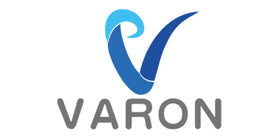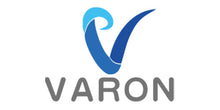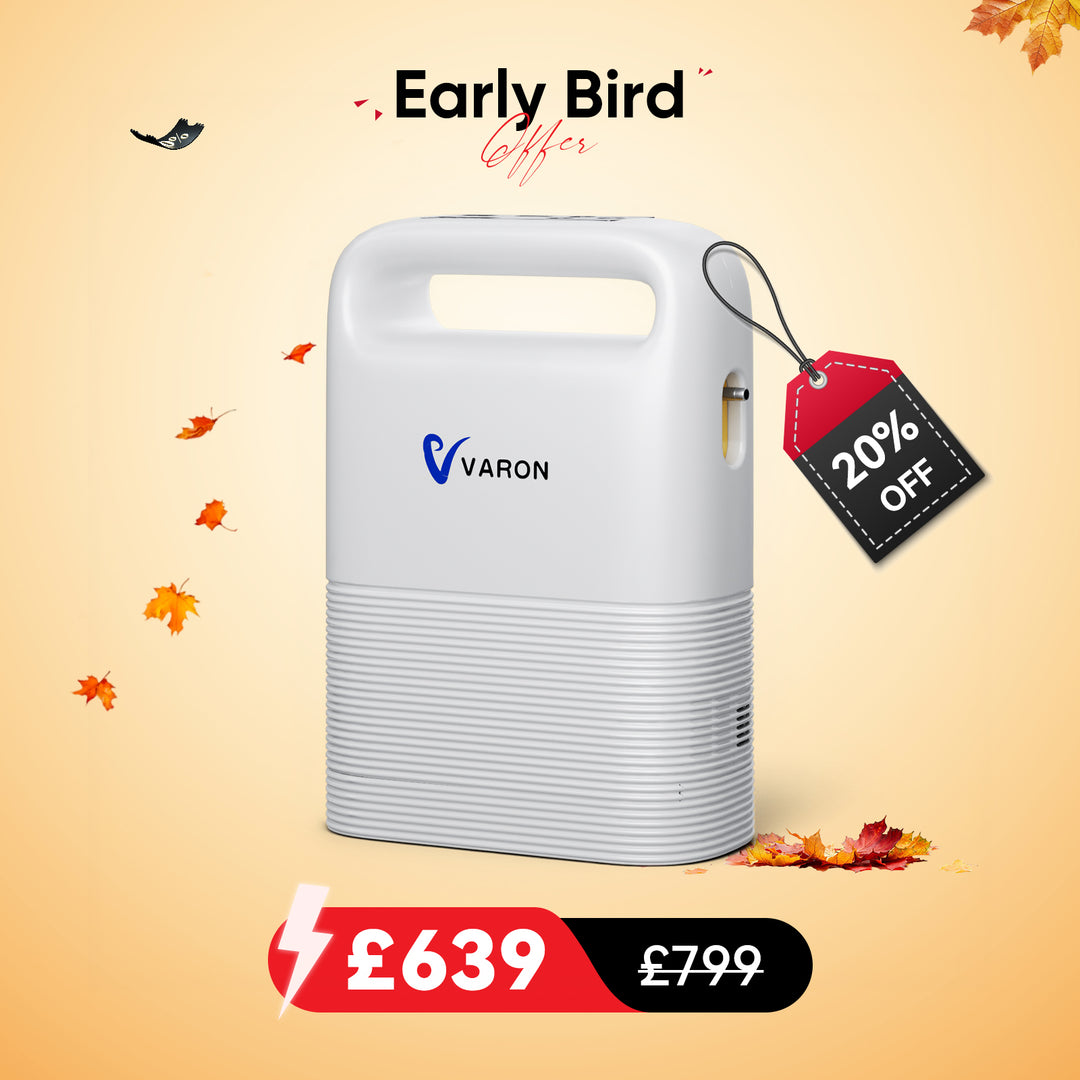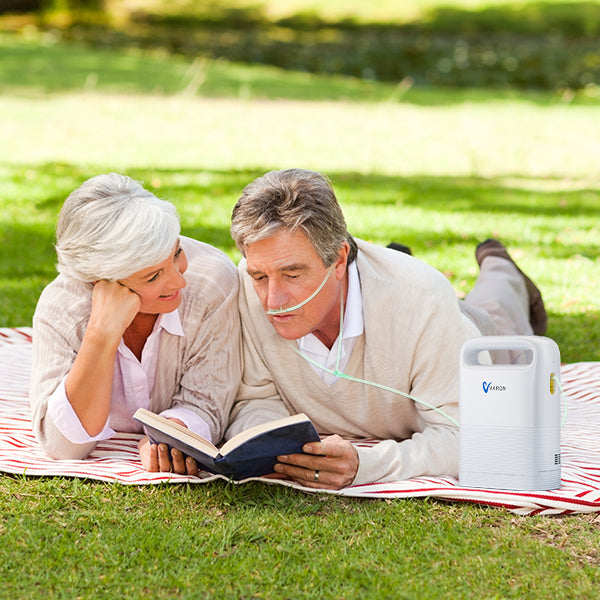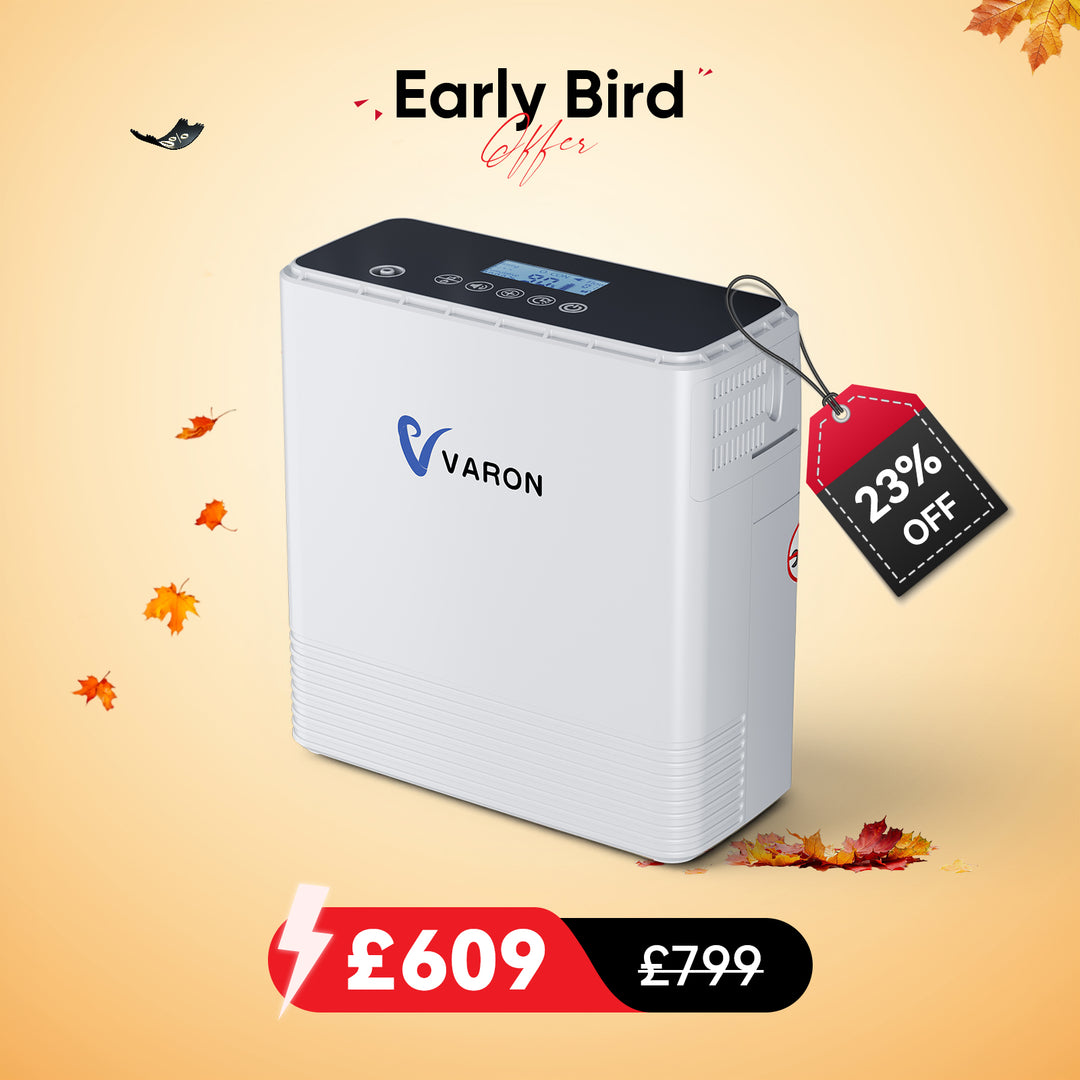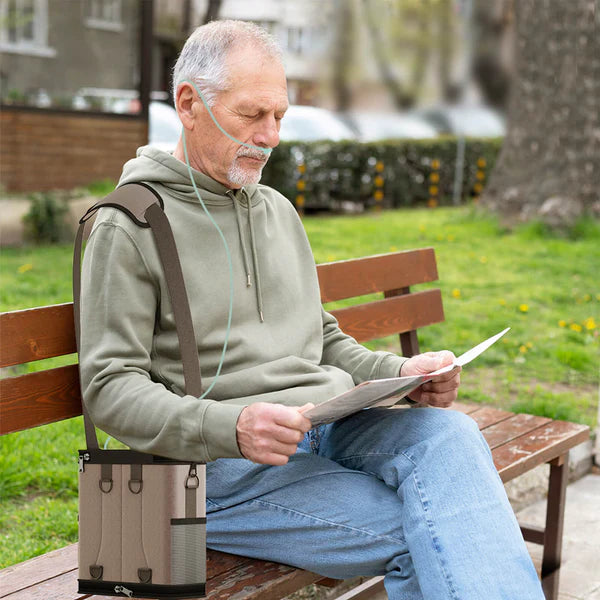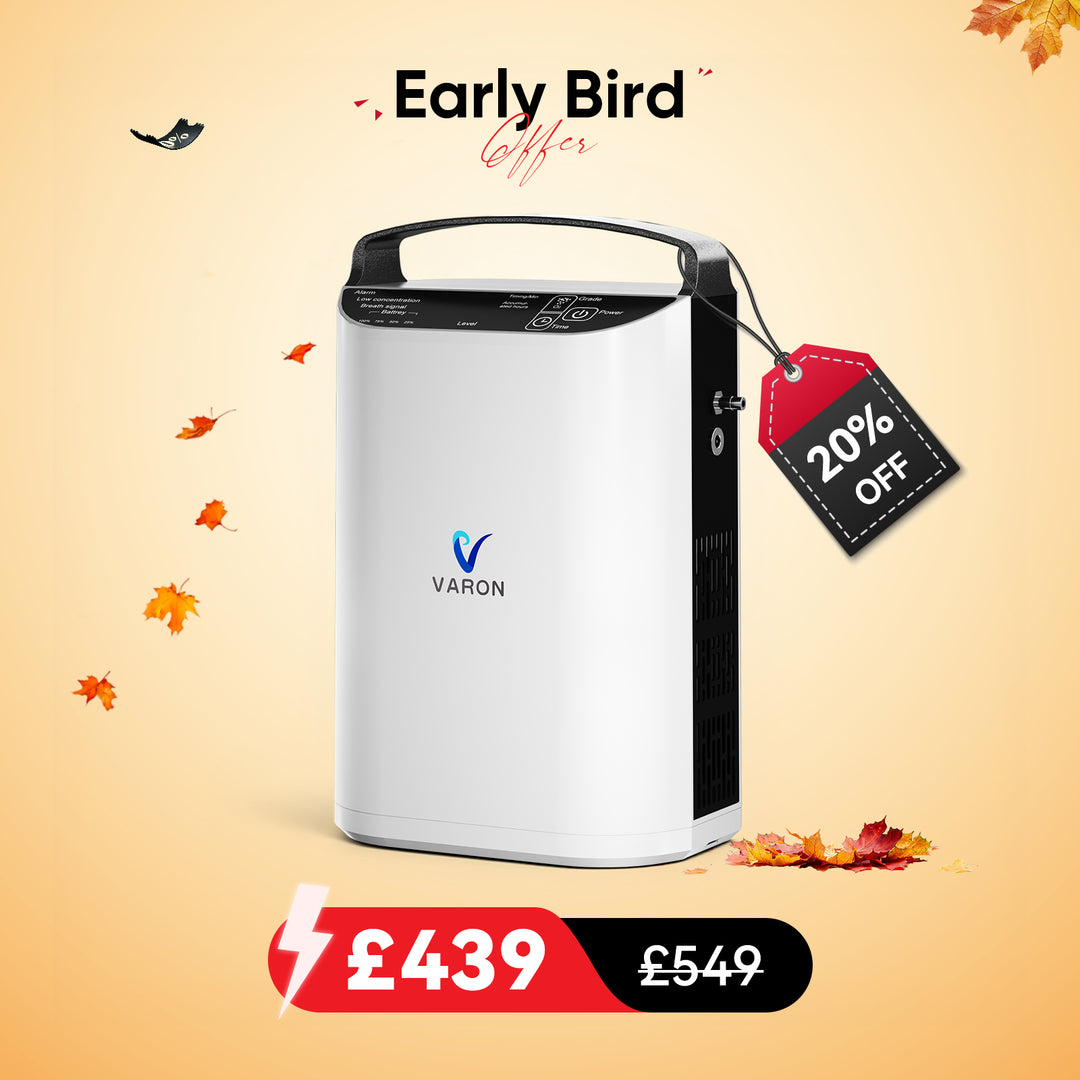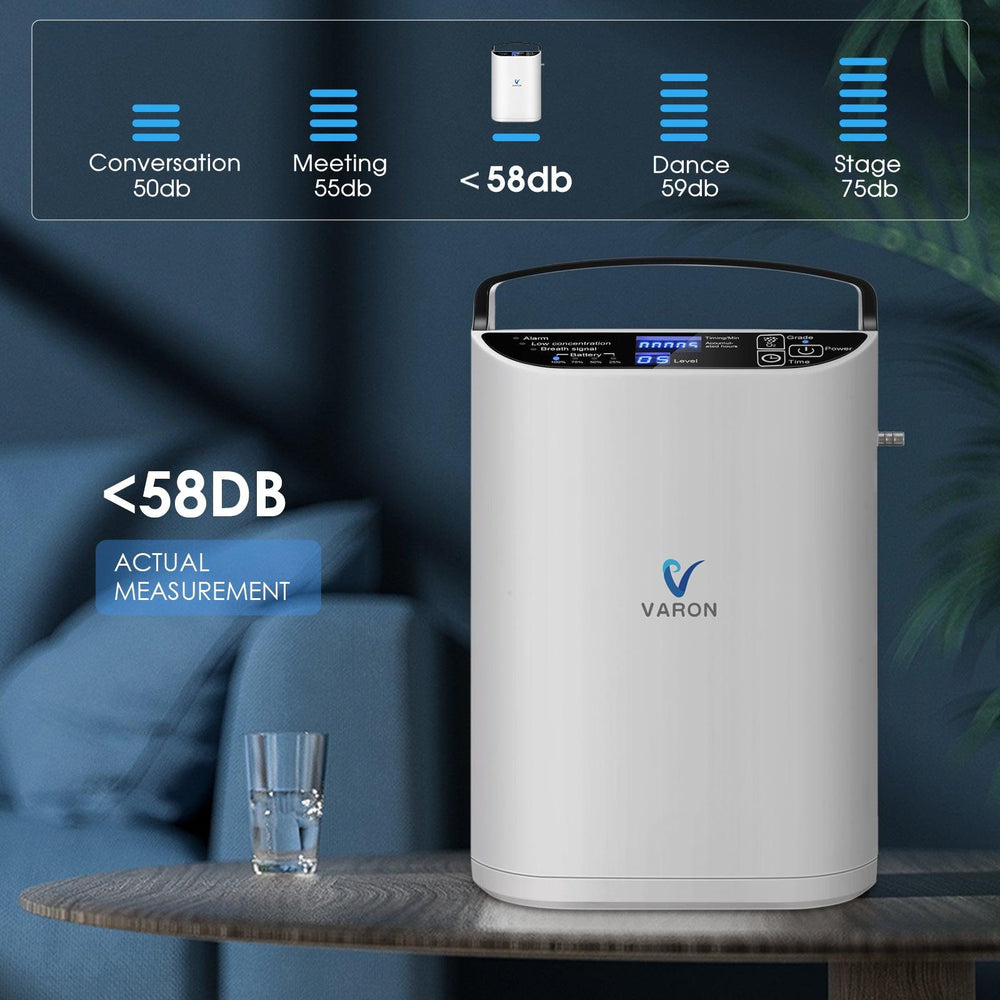Understanding the Difference Between Nebulizer Funtion and Home Oxygen Concentrator Atomization Function
At VARON-UK, we understand the challenges of managing respiratory conditions. That's why we offer the VARON Portable Nebulizer, a convenient and effective solution for delivering medication directly to your lungs. This blog post delves into the world of nebulizers, explaining how they work and highlighting the key features of the VARON Portable Nebulizer to help you breath freely. We'll also briefly touch upon the atomization technology used in home oxygen concentrators.
Understanding Nebulizer: A Breath of Relief

A nebulizer is a medical marvel in the realm of respiratory health. Unlike medications taken orally or injected, a nebulizer delivers medication directly to your lungs, offering a targeted and often more effective approach to treatment. Imagine a tiny delivery system for your airways, bypassing the digestive system and ensuring a higher concentration of medication reaches the intended site. This direct approach translates into faster relief and potentially lower medication dosages compared to some traditional methods.
Nebulizers work by transforming liquid medication into a fine mist, typically with particles less than 5 micrometers in size. These microscopic particles can be easily inhaled deep into the lungs, where they can rapidly produce a therapeutic effect. This method is particularly beneficial for individuals struggling with respiratory conditions such as:
- Asthma: Nebulized medication can help relax constricted airways, easing breathing difficulties and reducing asthma symptoms like wheezing, coughing, and chest tightness.
- Allergies: Nebulized medications like corticosteroids can effectively target inflammation in the airways, alleviating allergy symptoms such as congestion, runny nose, and itchy eyes.
- COPD (Chronic Obstructive Pulmonary Disease): Nebulized bronchodilators can help open up narrowed airways, improving airflow and easing breathing difficulties associated with COPD.
Nebulizers offer several advantages over other medication delivery methods:
- Targeted Delivery: Medication reaches the airways directly, maximizing its effect on the respiratory system.
- Faster Relief: The inhaled medication can act quickly, providing relief from symptoms sooner than some oral medications.
- Reduced Side Effects: Bypassing the digestive system can minimize potential side effects associated with oral medications.
The Science Behind the Mist: Microporous Atomization Technology

VARON Portable Nebulizers utilize microporous atomization technology. This technology employs a mesh plate with microscopic holes that vibrates at high frequency. As the medication passes through the mesh, it's broken down into tiny particles (less than 5 micrometers) forming a breathable mist. These fine particles are easily inhaled deep into the lungs, maximizing medication absorption and treatment effectiveness.
Meet the VARON Portable Nebulizer Family
VARON offers three portable nebulizers, each equipped with microporous atomization technology to deliver medication as a fine mist for optimal absorption. Here's a quick introduction to each model:
-
VARON Portable Nebulizer MY-132: This versatile nebulizer features adult and child modes, a self-cleaning function, and quiet operation. Powered by an eco-friendly lithium battery, it's ideal for use at home or on the go.
-
VARON Portable Nebulizer MY-133: This model prioritizes convenience. It offers adult and child modes, comes with adult and child masks, and boasts a self-cleaning function for reduced maintenance. You can power it with either dry batteries (not included) or a USB cable.
-
VARON Portable Nebulizer MY-135B: This nebulizer is designed for speed and efficiency. It features three modes: a 10-minute rapid nebulization mode for adults, a 20-minute mode for children, and a 5-minute self-cleaning mode. Powered by a lithium battery with USB charging, it offers a convenient and effective treatment experience.
VARON Portable Nebulizer Feature Comparison Table
To help you decide which VARON Portable Nebulizer is right for you, we've compiled a table comparing their key features:
| Feature | MY-132 | MY-133 | MY-135B |
|---|---|---|---|
| Power Source | Eco-friendly lithium battery (USB charging) | Dry battery (not included) or USB cable | Eco-friendly lithium battery (USB charging) |
| Modes | Adult, Child, Self-cleaning | Adult, Child, Self-cleaning | Adult (rapid), Child, Self-cleaning |
| Nebulization Rate | ≥0.2ml/min | ≥0.2ml/min | ≥0.2ml/min |
| Particle Size | ≤5um | ≤5um | ≤5um |
| Sound Level | ≤50dB | ≤50dB | ≤50dB |
| Included Masks | N/A | Adult, Child | N/A |
| Weight | 0.1kg (0.2lb) | 0.09g (0.2lb) | N/A |
Choosing the Right VARON Portable Nebulizer
Here are some factors to consider when choosing your VARON Portable Nebulizer:
- Power Source: If portability is a top priority, consider the MY-132 or MY-135B with rechargeable batteries. If you prefer the option of using dry batteries, the MY-133 might be a better choice.
- Modes: If you need different treatment times for adults and children, the MY-135B with its rapid mode for adults is ideal. For a self-cleaning function in all models, choose the MY-132, MY-133, or MY-135B.
- Included Masks: The MY-133 comes with both adult and child masks, while the other models do not. Consider purchasing additional masks separately if needed.
Beyond Nebulizers: A Look at Home Oxygen Concentrator Atomization
Nebulizers and home oxygen concentrators (HOCs) are both valuable tools for respiratory health, but they address different needs. While nebulizers excel at delivering medication directly to the lungs in mist form, Home Oxygen Concentrators focus on providing a continuous supply of concentrated oxygen. Let's delve deeper into the world of home oxygen concentrator atomization and how it differs from nebulization.
Understanding Home Oxygen Concentrator (HOC) Atomization
Unlike nebulizers that focus on medication delivery, HOCs concentrate on providing a continuous flow of breathable oxygen. This process, known as atomization, involves separating oxygen molecules from the surrounding air. Here's a breakdown of how Home oxygen concentrator atomization with Pressure Swing Adsorption (PSA) technology works:

- Air Intake: Air is drawn into the Home oxygen concentrator through a filter, removing dust and other airborne particles.
- Zeolite Beds: The filtered air passes through two chambers filled with zeolite beads, a mineral with a strong affinity for nitrogen molecules.
- Selective Adsorption: As the air flows through the zeolite beds, the nitrogen molecules are attracted to and trapped within the beads, allowing oxygen molecules to pass through more freely.
- Pressure Changes: The pressure within the chambers alternates between high and low. During the low-pressure phase, the zeolite releases the captured nitrogen molecules, regenerating its capacity for further adsorption.
- Oxygen Delivery: The concentrated oxygen exits the zeolite beds and is delivered to the user through nasal prongs or a mask.
Home Oxygen Concentrator Atomization vs. Nebulizer Nebulization: Key Differences
While both nebulizers and home oxygen concentrators involve the creation of a mist or concentrated gas for inhalation, there are key distinctions between their functions:
- Purpose: Nebulizers focus on delivering medication in mist form directly to the airways for targeted treatment of respiratory conditions like asthma, COPD, and allergies. Home Oxygen Concentrators provide a continuous flow of concentrated oxygen for individuals with respiratory insufficiency who struggle to obtain sufficient oxygen from the ambient air we breath.
- Process: Nebulizers utilize a mesh or vibrating plate to break down liquid medication into fine particles. Home Oxygen Concentrators employ PSA technology to separate oxygen molecules from room air.
- Output: Nebulizers deliver a mist containing medication particles. HOCs deliver a continuous flow of concentrated oxygen (typically 90-95% pure).
Choosing Between a Nebulizer and Home Oxygen Concentrator
The choice between a nebulizer and Home Oxygen Concentrator depends on your specific medical needs. Here's a simplified guide:
- Nebulizer: Ideal for those who require targeted medication delivery to treat respiratory conditions like asthma, COPD, and allergies.
- Home Oxygen Concentrator: Home Oxygen Concentrators are not a substitute for nebulized medication and may be used in conjunction with nebulizer therapy for some patients.
Conclusion
Nebulizers and Home Oxygen Concentrators are both valuable tools in the fight against respiratory issues. Nebulizers offer a convenient and targeted method for medication delivery, while Home Oxygen Concentrators provide a continuous supply of concentrated oxygen for those in need. If you have any questions regarding respiratory health or which technology might be right for you, consult with your doctor.
VARON-UK: Committed to Your Respiratory Health
At VARON-UK, we understand the importance of managing respiratory conditions effectively. We offer a wide range of portable nebulizers to suit your needs, and can also provide information on home oxygen concentrators. Browse our selection of nebulizers and oxygen concentrators online or contact us today to learn more!
